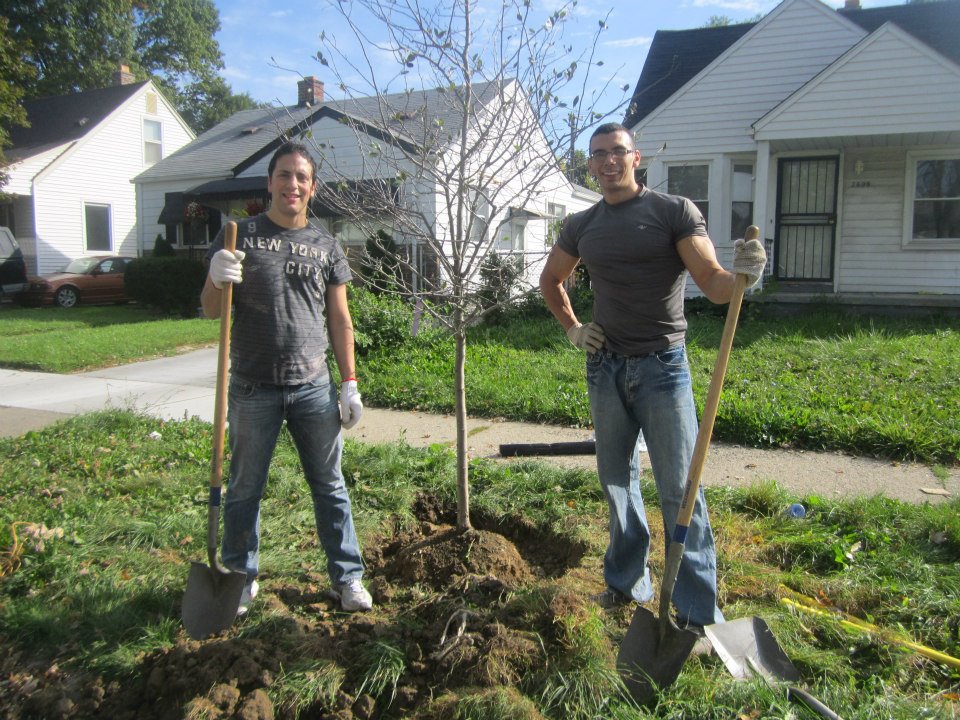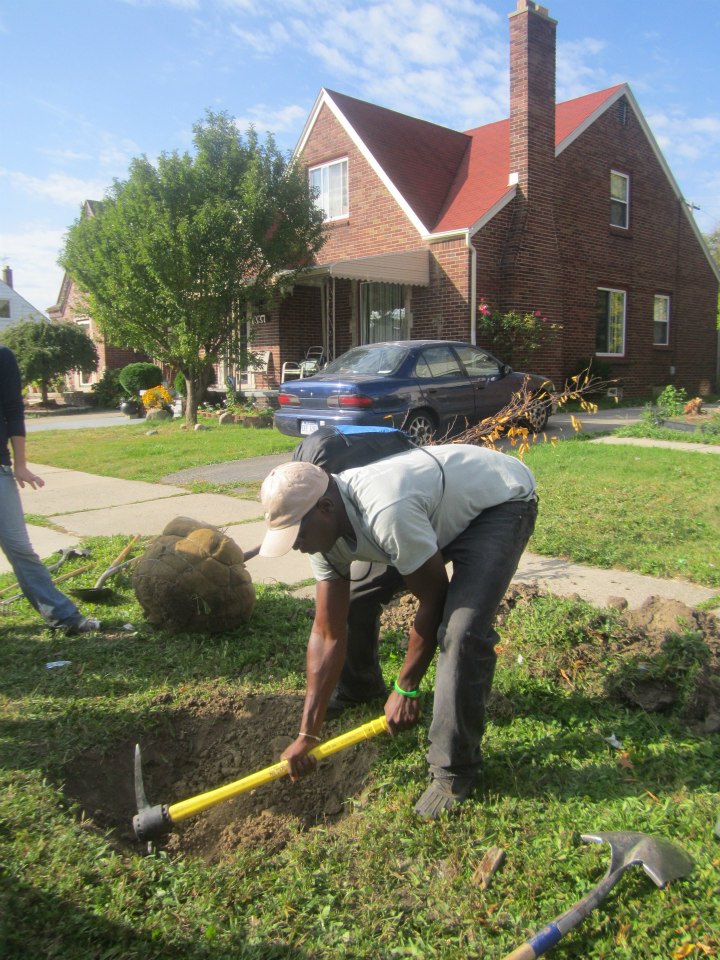The proper tools for preparing the planting area depend on the size of the tree, the type of root system, the site, and the condition of the soil. The most common hand tool for planting trees is the shovel, but other tools may be needed and used. The following tools are often used on urban planting sites:
Shovel and sharpshooter
A round-point shovel is good for digging a hole and a flat shovel is good for shoveling dirt back into the hole. A sharpshooter, similar to an elongated, round-point spade, is recommended for removing trees from the ground and for root pruning. These tools work best when the blade is sharp. A dull blade breaks and bruises roots instead of cutting them.
 |
| Photo credit: Greening of Detroit. |
Dibble
This durable instrument with a heavy steel blade and tubular steel handle will make a hole in almost anything. It is primarily used to plant seedlings for reforestation, but is sometimes used as a prying tool.
Hoedad, maddock, or pick
A hoedad, maddock, or pick can be used to break up hard or compacted soil so it is easier to shovel.
 |
| Photo credit: Greening of Detroit. |
Rototiller
A rototiller can loosen the soil, particularly if it is compacted. However, care must be taken not to injure roots of any existing trees.
Tree spades, backhoes, and other mechanical equipment
For large trees, tree spades, backhoes, and other similar types of excavation equipment are sometimes used. When using mechanical excavators, it is important not to dig too deep. Power augers are sometimes used to penetrate hardpans. These machines do create glazed, smooth sides in the planting area, so it is necessary to roughen the sides to increase root penetration and drainage.
To learn this content and more for ISA and SAF credit, please visit cfegroup.org.
To learn this content and more for volunteer credit and a certificate of completion, please enroll in eLearn Urban Forestry at campus.extension.org.
By: Ed Macie, Regional Urban Forester, USFS Southern Region
